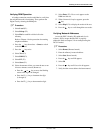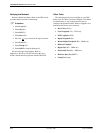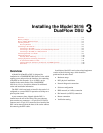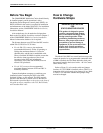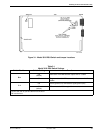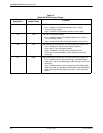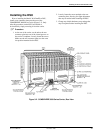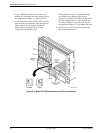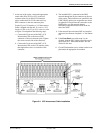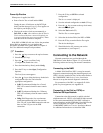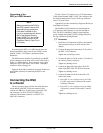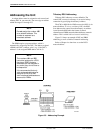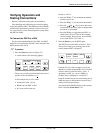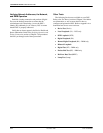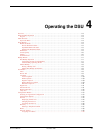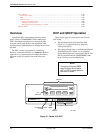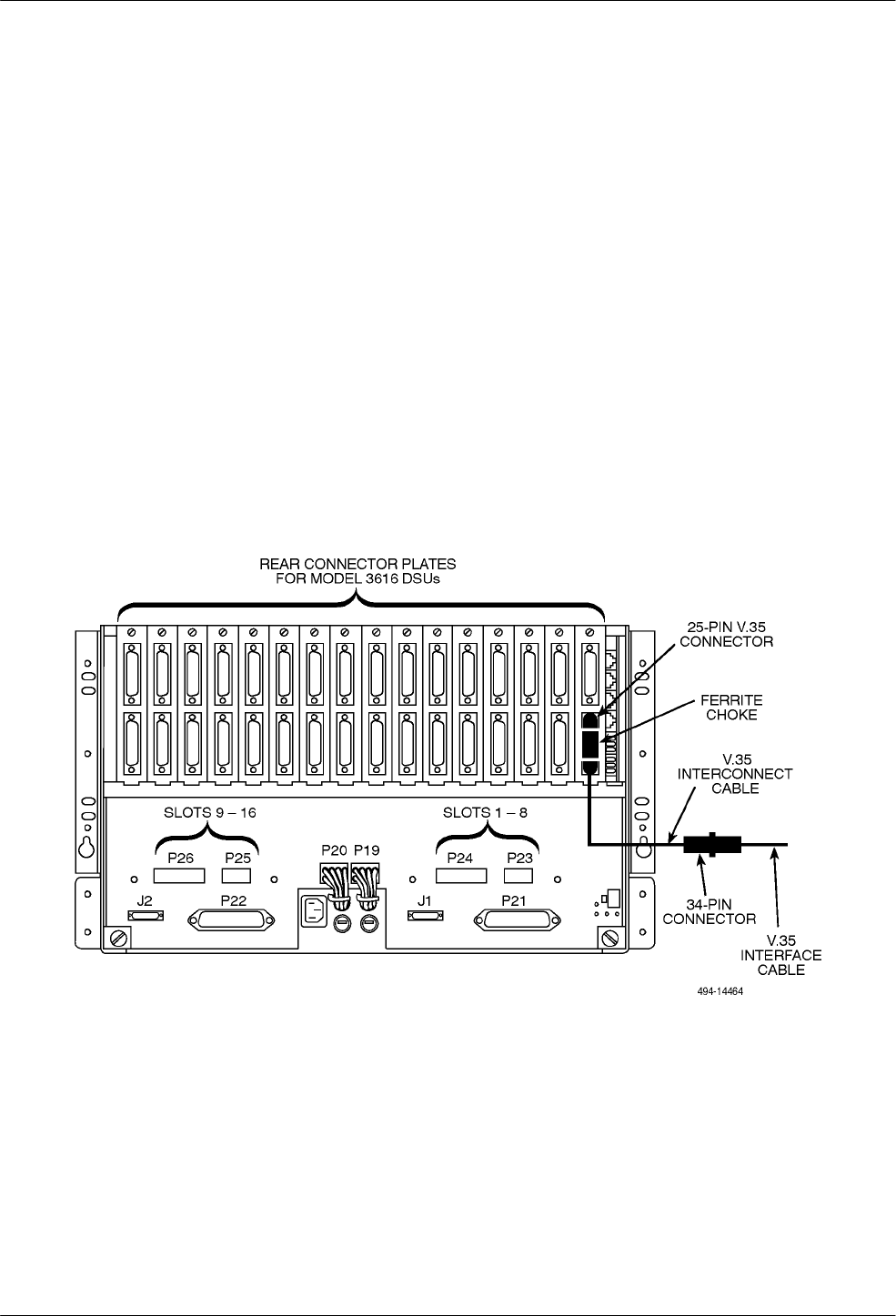
Installing the Model 3616 DualFlow DSU
3-73615-A2-GB20-20 December 1996
7. At the rear of the carrier, connect the appropriate
router cable (EIA-232-D or V.35) to the rear
connector plate. For an EIA-232-D interface
cable, connect the EIA-232-D cable to the top
DTE connector on the rear connector plate.
For the 25-pin V.35 interface, a V.35 Interconnect
Cable is shipped with the unit.
To connect a V.35
Interface Cable to the 25-pin V
.35 connector
, refer
to Figure 3-4 and perform the following steps:
a. Connect the 25-pin end of the DSU’
s V
.35
Interconnect Cable to the bottom DTE
connector of the rear connector plate. Tighten
the screws on each side of the connector
.
b. Connect the 34-pin end of the DSU’
s V
.35
Interconnect Cable to the V.35 interface cable,
then tighten the screws on each side of this
connector.
8.
The installed DSU is connected to the DDS
network through the 50-pin connectors at the rear
of the carrier. These interfaces are specified in the
USOC RJ48T, and the pin assignments are shown
in Appendix D. Proper network connection to the
DDS facility or to the network channel-
terminating equipment must be made at the far
end of the cable.
9. If the network line and remote DSU are installed
and tested, do a Remote Loopback – a T
est Pattern
test.
10. If the Front Panel
test switch strap is to be
disabled, slide the DSU slightly out of the carrier,
open switch S3-1, then reseat the DSU into the
carrier.
Do this now
.
11. Circuit ID information can be written on the cover
plate under the appropriate slot number.
Figure 3-4. V.35 Interconnect Cable Installation



